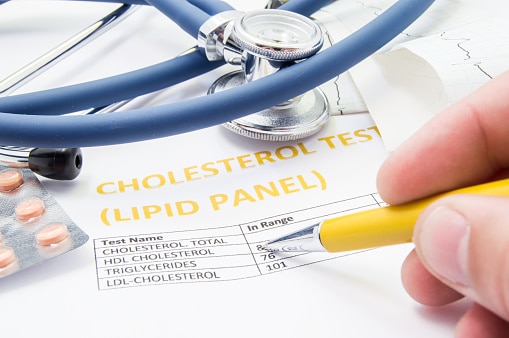What’s the first thing that comes to mind when you hear the word cholesterol? Most likely it’s not something good. Cholesterol is often associated with its harmful impact on health. In reality, it’s more complicated than that. Knowing what’s “bad” and what’s “good” can be the difference between sickness and health.
What is total cholesterol?
The American Heart Association (AHA) gives this general definition of cholesterol: “Cholesterol is a waxy substance. It’s not inherently ‘bad.’ Your body needs it to build cells and make vitamins and other hormones.” Total cholesterol levels represent two kinds of cholesterol in the body, low-density lipoprotein (LDL, or “bad”) cholesterol and high-density lipoprotein (HDL, or “good”) cholesterol. Scheduling a biometric screening is a good way to know your numbers.
What’s the difference?
LDL is the cholesterol that creates problems in the body. Levels of this cholesterol should be kept as low as possible. This kind of cholesterol is transported through the body and sticks to arterial walls. Over time this build up means blood cannot flow freely through the body. Eventually, this leads to chest pain, strokes, heart disease, high blood pressure and other serious heart conditions when levels in the body are unhealthy. High LDL is also a risk factor for metabolic syndrome.
HDL, on the other hand, should be as high as possible. This cholesterol acts more like a street sweeper, clearing the fatty deposits from the arteries so that blood can flow freely. It transports excess fat to the kidneys to be removed from the body.
Knowing the LDL to HDL numbers within total cholesterol levels is imperative so that measures can be taken to lower or raise the specific cholesterol that needs attention with targeted interventions.
How to raise HDL and lower LDL
Total cholesterol levels for both men and women should remain under 200. A healthy HDL level for a man is above 45 and above 55 for a female. LDL levels for both sexes should remain under 130 for healthy individuals or under 100 for heart or blood vessel disease, or for those with high total cholesterol levels. Because lifestyle plays a significant part in these readings, lifestyle adjustments are an impactful way to change them. Preventing the onset of metabolic syndrome or diabetes is a powerful motive to change health behaviors.
To raise HDL in the total cholesterol level, lifestyle interventions include:
- Avoiding trans fats
- Reducing consumption of saturated fats
- Exercising
- Quitting smoking
Adjustments to LDL levels can be made through:
- Heart-healthy diet: Eat a heart-healthy diet such as the DASH eating plan or a diet low in saturated and trans-fat.
- Weight management: Losing excess weight can lower LDL cholesterol levels.
- Physical activity: Perform at least 30 minutes of moderate-intensity cardio exercise or weightlifting per day.
Before undertaking any of these lifestyle interventions, it’s important to seek medical advice to consider whether medication might be necessary for a more serious condition. Often, medical and lifestyle interventions are used in tandem to support healthy total cholesterol levels.
Knowing how to read and interpret total cholesterol levels is imperative to physical wellbeing and longevity. If you have any additional questions or concerns after reading this article, be sure to consult with your primary physician as soon as possible.
